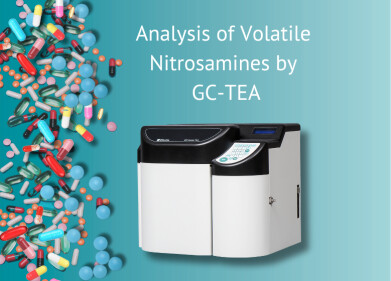GC-MS
What Are the Properties of Dental Cement? - Chromatography Explores
Dec 20 2020
There are often times when we need the skill and artistry of a dentist. Braces, polishing, fillings, and extractions are tasks we need from time to time. The pain of toothache is one of the aches that cause us most distress – who can forget Laurence Olivier and Dustin Hoffman in Marathon Man. Toothache as torture.
Dental cements are one of the tools used by skilled dentists to keep us in good health with a nice smile. A recent study by researchers in Germany has investigated whether plant extracts can increase the antimicrobial properties of dental cement. In a report published in the journal Biomaterials Synthesis and Characterization they used gas chromatography to help investigate the properties of one type of dental cement. Let’s take a quick look at what the dentist might be using tomorrow.
Glass ionomer cements in the mouth
Dental cements are used to glue and hold crowns, bridges, and inlays in place alongside various other restorative jobs on teeth such as temporary pulp protection. They are used just like other glues or cements. Properties of dental include biocompatibility (must not be rejected by the body), low thermal conductivity and expansion, and they should look the surrounding structure whether that is tooth or gum.
One material that is commonly used in dental restorative work is known as glass ionomer cement. This is used as both a filling material and as a dental cement for holding bridges and crowns in place. Like many other cements, glass ionomers are made by a chemical reaction between a solid and a liquid. In this case a silicate glass powder and polyacrylic acid which is the ionomer.
The glass that is formed is known as a polyalkenoate glass residue in a an ionised polycarboxylate matrix. The glass contains fluoride and the steady release of fluoride over time is believed to help allow the glass to last longer in situ. Another advantage of the glass is that it has hydrophilic properties allowed them some resistance against saliva contamination.
Plant antibacterial agents added to cement
The team behind the paper referenced above report that there is not much data regarding the addition of natural antimicrobial agents to glass cements. Some natural agents have been shown to be effective against cariogenic salivary flora – flora that can cause tooth decay. The team used gas chromatography to analyse a selection of plant extract mixture before they were added to glass cements. Recent chromatographic column advances are discussed in the article, Practical Impact of Dispersion on Fast Chromatographic Separations.
The team used extracts from the plants Salvadora persica, Fiscus carcia and Olea europaea and using GC-MS found 38 volatile compounds. The glass cement mixed with plant extracts shown increased microbial activity compared with standard cement and improved some of the material properties of the glass cement. They report that further studies with respect to other bacterial strains, shear bond strength, and applicability in dental practice are in progress.
Events
May 11 2025 Vienna, Austria
May 18 2025 Tempe. AZ, USA
May 21 2025 Birmingham, UK
Jun 01 2025 Baltimore, MD, USA
Jun 15 2025 Bruges, Belgium














